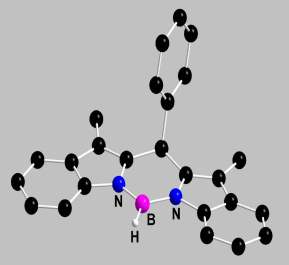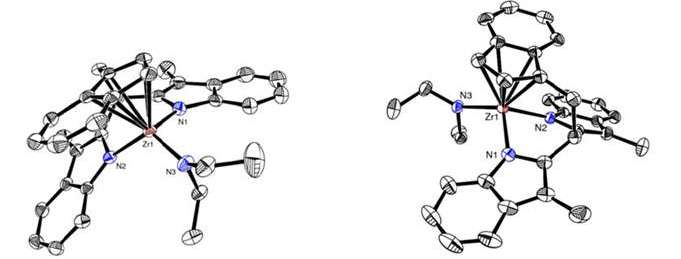Faculty: Mark R. Mason, Ph.D.

Professor
Email: Mark.Mason@utoledo.edu
Office: WO 3260
Phone: (419) 530-1532
Fax: (419) 530-4033
Professional Background:
B.S., 1985, Bowling Green State University
Ph.D., 1991, Iowa State University
Postdoctoral Associate, 1991-1993, Harvard University
Postdoctoral Research Position in Inorganic Chemistry and Catalysis
Review of applications will begin on August 3, 2020. The position is available immediately. Click here for additional information.
Research Synopsis:
Inorganic, Organometallic, and Green Chemistry:
Inorganic, Organometallic, and Green Chemistry:
Synthesis, characterization, and reactivity of molecules and materials with catalytic
applications; organoaluminum catalysts and cocatalysts; Lewis acids, alkylaluminoxane
analogues; epoxide polymerization catalysts; hydroformylation; biomass conversions.
My group is currently pursuing four areas of research: (1) Design of aluminum complexes
for use in catalysis and for the activation of small molecules, (2) development of
early transition metal complexes for the oligomerization and polymerization of alkenes,
(3) development of new phosphorus ligands for applications in hydroformylation of
alkenes and C-C coupling reactions in ionic liquids, and (4) the conversion of biomass
to chemicals and polymers.
The interest in aluminum chemistry is driven by the high natural abundance and low
cost of aluminum (see ACS webinet), the high reactivity of organoaluminum reagents with small molecules, and the similarities
of aluminum(III) chemistry to that for some of the early transition metals. Our research
focusses on developing new ways to activate small molecules such as CO, the development
of Lewis acid catalysts and cocatalysts for the polymerization of epoxides and cyclic
lactones, and the polymerization and oligomerization of alkenes. This chemistry occasionally
extends to other group 13 elements, mainly boron and gallium. In recent years we
have made extensive use of ligands that incorporate indole and pyrrole moieties.
Molecular structures of some recent examples are shown below.


Our work on the functionalization, oligomerization and polymerization of alkenes with
early transition metal complexes focusses on development of unique indole- and pyrrole-based
ligands. Although the polymerization and oligomerization of alkenes by early transition
metal complexes has been heavily investigated in industry and academia, our ligands
systems are unique. One family of ligands currently under investigation is comprised
of cyclopentadienyl moiety tethered to a diindolylethane or dipyrroethane. Upon deprotonation,
these ligands are trianionic and provide a unique coordination environment around
the metal as shown in the ORTEP below. We are currently exploring the coordination
chemistry and reactivity of this family of ligands.

The conversion of biomass to chemical products is a new project for the group, and
is being conducted in collaboration with Professor Sas Varanasi, Department of Chemical
and Environmental Engineering, and an industrial sponsor. This work is supported
by an SBIR grant from the Department of Energy.
Additional research interests include the synthesis of novel phosphorus ligands with
applications in homogeneous catalysis, including hydroformylation of alkenes and C-C
coupling reactions in ionic liquids.
Consistent with our breadth of research interests, my group utilizes a broad range
of synthetic and characterization techniques, including the handling of air- and moisture
sensitive reagents, solvothermal synthesis, solution and solid-state multinuclear
NMR spectroscopy, infrared spectroscopy, and X-ray crystallography. We also utilize
isothermal titration calorimetry in collaboration with Professor Bob Flowers at Lehigh
University.


